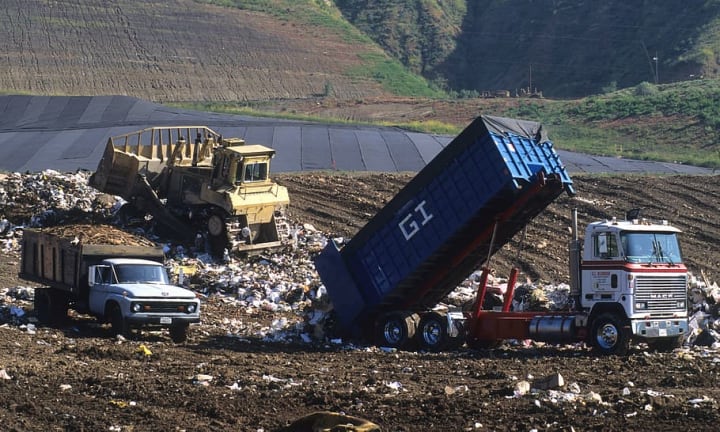
Introduction
Land pollution refers to the degradation of the quality and health of soil, vegetation, and other land resources as a result of human activities. Land pollution can occur through the accumulation of solid waste, deforestation, improper agricultural practices, mining activities, urbanization, and industrialization.

Human activities can release harmful substances such as chemicals, heavy metals, and plastics into the soil, which can lead to soil contamination and degradation of soil health. This can negatively affect plant growth, soil fertility, and the overall health of the ecosystem.
Land pollution can have negative impacts on human health as well, as it can cause soil contamination and groundwater pollution. Exposure to polluted soil and groundwater can lead to a range of health problems, including respiratory issues, cancer, and neurological problems.
Overall, land pollution is a serious issue that requires concerted efforts from individuals, businesses, and governments to reduce the introduction of harmful substances into soil and to protect and preserve our land resources.
Land Pollution Caused By.....
Land pollution can be caused by a variety of human activities, including:
1. Improper waste disposal: Dumping of solid waste and hazardous materials on land can cause contamination of soil and groundwater.
2. Deforestation: Clearing of forests for agriculture, urbanization, or other purposes can lead to soil erosion and loss of biodiversity.
3. Agricultural practices: The use of fertilizers, pesticides, and other chemicals can lead to soil contamination and degradation of soil health.
4. Mining activities: Mining activities can release harmful substances such as heavy metals and toxic chemicals into the soil.
5. Urbanization: Urbanization can lead to increased pollution and loss of green spaces, which can negatively affect the health of the ecosystem.
6. Industrialization: Industries can release harmful substances such as chemicals and heavy metals into the soil, leading to soil contamination.
7. Landfills: Improperly managed landfills can release harmful substances into the soil and groundwater, leading to contamination.
Overall, land pollution is a serious issue that requires concerted efforts from individuals, businesses, and governments to reduce the introduction of harmful substances into soil and to protect and preserve our land resources.
What are the effects of water pollution?
Land pollution can have a range of negative effects on human health, the environment, and the economy. Here are some of the main effects of land pollution:
1. Soil contamination: Land pollution can cause soil contamination, leading to degradation of soil health and a decrease in soil fertility. This can negatively impact plant growth, crop yields, and the overall health of the ecosystem.
2. Groundwater pollution: Land pollution can also cause groundwater pollution, which can lead to contamination of drinking water supplies and negative impacts on human health.
3. Loss of biodiversity: Land pollution can lead to loss of biodiversity by destroying habitats and reducing the availability of resources for wildlife.
4. Climate change: Land pollution can contribute to climate change by releasing greenhouse gases, such as methane and carbon dioxide, from landfills and other sources.
5. Economic costs: Land pollution can have significant economic costs, including damage to agricultural productivity, loss of tourism revenues, and the costs of cleaning up contaminated land.
6. Health problems: Exposure to contaminated soil or groundwater can lead to a range of health problems, including respiratory issues, cancer, and neurological problems.
7. Aesthetic damage: Land pollution can also cause aesthetic damage, such as litter and visual pollution, which can negatively impact the quality of life for individuals and communities.
Overall, land pollution is a serious issue that requires concerted efforts from individuals, businesses, and governments to reduce the introduction of harmful substances into soil and to protect and preserve our land resources.

Reducing land pollution requires a concerted effort from individuals, businesses, and governments. Here are some ways to reduce land pollution:
1. Proper waste disposal: Properly dispose of household waste, chemicals, and hazardous materials in designated areas, and never dump them on land.
2. Reduce chemical use: Use environmentally friendly cleaning products, and avoid using pesticides and fertilizers in excess, which can leach into the soil and groundwater.
3. Practice sustainable agriculture: Use sustainable farming practices that protect soil health and reduce the use of chemicals and fertilizers.
4. Reduce deforestation: Protect forests and practice sustainable forestry, which helps maintain the quality of soil and protects biodiversity.
5. Reduce urbanization: Avoid over-development and instead prioritize green spaces and environmentally friendly practices in urban planning.
6. Properly manage industrial waste: Properly dispose of industrial waste and hazardous materials in designated areas, and avoid dumping them on land.
7. Landfill management: Properly manage landfills by implementing measures to reduce the amount of waste sent to landfills, properly cover and seal landfills to reduce pollution, and implement monitoring systems to detect and address any pollution issues.
8. Support policies and regulations: Support policies and regulations that protect land resources and reduce pollution.
By implementing these practices, we can reduce the introduction of harmful substances into the soil and protect and preserve our land resources.
About the Creator
Love The Green
Welcome to my page,I hope to share my experiences, insights, and knowledge with fellow nature enthusiasts.Together, we can celebrate the wonders of the natural world, and work to protect and preserve it for future generations to enjoy🌿🌲






Comments
There are no comments for this story
Be the first to respond and start the conversation.